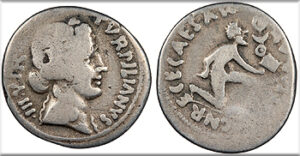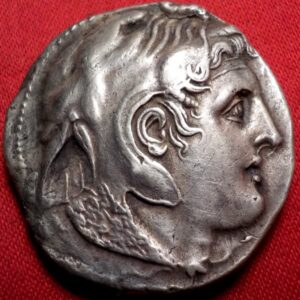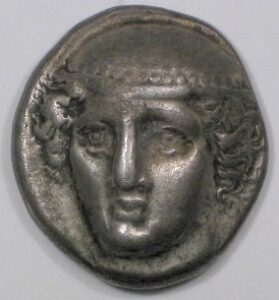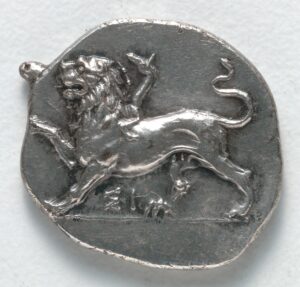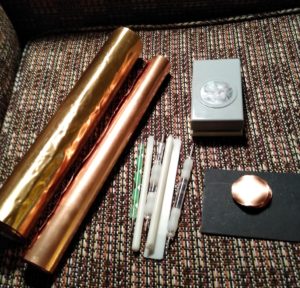I have found many YouTube channels that are good for the study of ancient coins. One of the absolute best is Classical Numismatics. The videos are enjoyable and packed with knowledge but not over the top. Here’s a good one to start with:
World’s Premier Ancient Coin Convention
 The New York City Intl Numismatic Convention (that’s a mouthful) is coming up this weekend! It is the leading convention for ancient coins and has ongoing auctions and eductional sessions in addition oto the exhibition hall (bourse), with over 100 international dealers and an incredible assosrtment of numismatic goods.
The New York City Intl Numismatic Convention (that’s a mouthful) is coming up this weekend! It is the leading convention for ancient coins and has ongoing auctions and eductional sessions in addition oto the exhibition hall (bourse), with over 100 international dealers and an incredible assosrtment of numismatic goods.
It must be said that the specialty of this conference is ancient coins, and you will see some of the worlds most beautiful and valuable coins here. Below are some sample Greek and Roman coins:
A little Zazzle in my Life
Online Jamming Software
I have been looking into software for jamming together online. There are of course many options but the 3 that I have investigated are Jammr.net Jamkazam and jamulus. Each is completely different and has its advantages and drawbacks. The biggest problem w/ jamming together is latency, or the time it takes for a note played on your instrument or mic to get to another player’s headphones. Processing speed and physical distance add to latency which you don’t want to be greater than 40 ms. From what I can tell so far:
Jamulus is open source, free but requires a sound card ASIO which installation is beyond my skill set as it does interfere with the workings of the sound card in one’s computer and can be complicated. I am guessing that if one has an older computer that they don’t use and could dedicate only to jamulus it would be possible but I haven’t tried it. Also requires ethernet cable directly to router, (wi fi is slow).
Jammr.net I don’t really understand. It doesn’t try to reduce delay so latency is not a problem making physical distance no longer an issue. As they describe it:
“You set jammr to match the chord progression and it keeps everyone in sync. You hear what others played last time around the chord progression, and they hear what you played last time. Although everyone is playing at the same time, jammr is not actually real-time. The best way to understand how jammr works is to imagine you are playing a note and I am playing a G chord. Your note will sound good over the G chord no matter whether it’s the G chord that I’m playing right now or the G chord I played last time around the chord progression. The harmony will still work and everything will sound right.” This sounds a bit awkward to me but it must work as it does get good reviews.
Jamkazam seems to be the most promising. It does everything it can to reduce latency and allows for distances of around 1000+ miles. It has an excellent instructive website. It does require a piece of equipment, an audio interface, 100 – 200$, which basically speeds up the process on your instrument’s end. Also requires an ethernet connection with your router.
If anyone else wants to experiment with this, (longer distances possible with jammer.net) please let me know. I am willing to try any of them.
Thanks Claude N for the recommendations. The following article might also be of help.
https://www.roadiemusic.com/blog/best-online-jamming-websites/
Newbie Coinologist Podcast up and running
Continuing with metal embossing, make a Mandala!
Here is a playlist of metal and foil embossing tutorials https://www.youtube.com/playlist?list=PLC0gjcRdDk7Fkwus8M8vlQUv-N3zU3dYS
Upcoming Coinology workshops
Workshops tonight and next week at Adriance Library in Poughkeepsie!
An Embossorama Spiral
Here is a basic copper spiral. Making this is not necessarily an exercise for the beginner 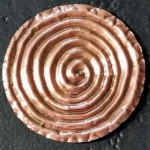 but as you move along the foil metal embossing path you’ll soon find making this spiral an interesting task because it involves making both sides viable as true spiral labyrinths. It thus becomes a meditation device.
but as you move along the foil metal embossing path you’ll soon find making this spiral an interesting task because it involves making both sides viable as true spiral labyrinths. It thus becomes a meditation device.
What do you need to get started?
- Embossing tools ie:
Soft-Grip Embossing & Stylus Set Complete by Royal & Langnickel
- A roll of copper or foil, I use:
St Louis Crafts 36 Gauge Copper Metal Foil Roll, 12 Inches x 10 Feet and St Louis Crafts Colored Aluminum Foil – 12 Inches x 25 Feet – Gold
- A foil punch 1.5″ 38mm (or whatever size you want to work in).
- A piece of mat board or cardboard as your work surface.
- Some ideas of what to emboss.
Ideas: Sanskrit letters, zodiac symbols, chess pieces, childrens’ names in bubble type, labyrinths, spirals, ancient ornamental patterns, landscapes, angel figures, mandalas, tarot deck…
Amazon has all required tools and materials.
For more equipment tips see Gorby’s metal embossing videos.
Getting Statered
Doug Smith’s website on the Ancient Coin Forum is great reading, funny and very informative. Here is the page to start on – where terminologies and basic historical time tables are discussed. This will give you a good start. I can’t think of any better introduction to ancient coins. A little ways in you’ll understand the typo…
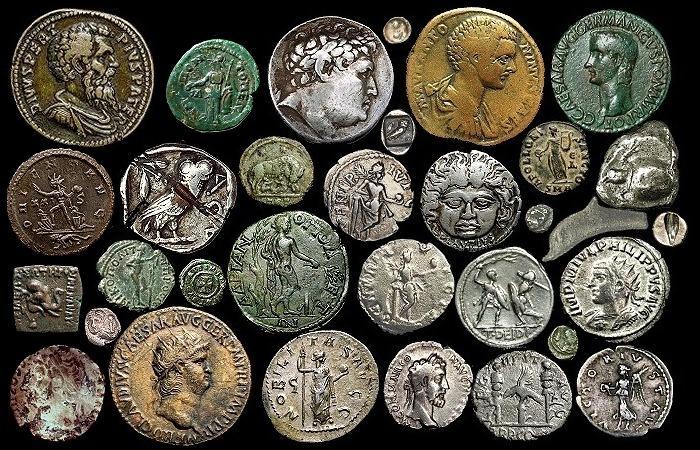
The Coinology Perspective
Every culture country and civilization has coinage that is collected, analyzed and traded. Coins are used as archaeological portals to gain access into historic and prehistoric times. In fact, coinology is arguably the best way to study history. Imagine Samarkand in the 7th century, the mix of languages and cultures. You will see that the coinage is remarkably complex and reflects this diversity. Without coins to give a vibrant living presence, deep historical discussions get too weighed down. With coins they are alive. It’s as if you can “see” the streets, the merchants and the ever present troops.
Yes, paying soldiers is one of the main reasons that coins are minted and they can be minted out in the field – this happened during the crusades, and these coins are highly collectible! Or…how did soldiers pay for stuff in the Civil War? There’s a whole story and area of collection that will blow your mind. Did you know that merchants would print their own tokens which were used as coins and these are collectible?
Don’t even talk about paper and ephemera. Wow. Notes of ALL kinds have always been issued and you can track history through them. An entire world awaits. Coin dealers recommend that you collect according to YOUR subject of interest, I guarantee it will be collectible – be it flowers, ancient Sumeria, tennis, ANYTHING can be found in coins. Every country has collectible and error coins by the droves. I am going to join the ANA just because it really is worth it, and I recommend you explore their website to see how coins are collected in your country or at your level of interest. But don’t spend a lot of money right at first. I will post a list of links relevant to this very soon.
